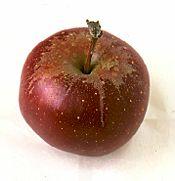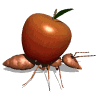Michael Fumento
Factual · Powerful · Original · Iconoclastic
The Anatomy of a Public Scare
July 16, 1993 · Michael Fumento · Investor’s Business Daily · Alar
"I regret to inform you that tomorrow or the next day we will all get environmental cancer. Good night."
Four years ago, CBS’ 60 Minutes announced that the apple growth regulator Alar is "the most potent cancer-causing agent in our food supply."
A spokeswoman for Mothers and Others for Pesticide Limits took to the airwaves. Magazines such as Time followed up with articles like "Watch Those Vegetables, Ma." Moms all over America panicked, pouring apple sauce and juice down the drain.
Since then, the Alar scare has been widely discredited. The EPA, the American Medical Association, and former Surgeon General C. Everett Koop all criticized the way the affair was handled.
Then-FDA Chairman Alvin Young later said of the incident, "This is one of the worst instances of where statements were made without benefit of scientific review."
But last week, as Yogi Berra might have put it, "It was deja vu all over again."
ABC News’ Nightline proclaimed, "Tonight, a new study sounds an alarm. Pesticides on fruits and vegetables may be giving our children cancer."
A spokeswoman for Mothers and Others for a Liveable Planet took to the airwaves. Newsweek ran an article, "Better Watch Those Fresh Fruits."
What happened?

The New York Times reported: "Environmental groups, which have been raising the alarm for over a decade, have been joined by the National Academy of Sciences and the three federal agencies that regulate pesticides . . . in acknowledging that the amount of pesticide residues in food is too great. That is true especially for infants."
While most of that statement was true, the linchpin of the story was the National Academy of Sciences, the country’s most respected scientific group. In fact, the NAS report said no such thing.
The NAS report, released June 28, essentially made four recommendations. But none of those said anything about pesticide levels being too great in the U.S. food supply either for children or for adults.
"It (the report) does not per se call for a reduction (in pesticide use)," said NAS panel Chairman Philip Landrigan, although he said that implementing the NAS’ recommendations could eventually have that effect.
"The major conclusion we reached was that the current system for regulating pesticides in foods needs to be improved and that (it) does not adequately protect infants and children and must be modified to take them into account."
Moreover, a NAS report released in 1989 found "no evidence that residues of individual pesticides in our diet contribute significantly to the overall risk of getting cancer."
It wasn’t the NAS that called for the banning of many synthetic pesticides, but rather two environmental advocacy groups, the Natural Resources Defense Council, which also orchestrated the Alar scare, and the Environmental Working Group. Both of their reports came out a few days ahead the NAS report.
Accompanying the environmentalist reports were press releases from almost a dozen other environmental groups calling for a phase-out of synthetic pesticides they consider dangerous.
Indeed, the NRDC press packet accompanying its own report included a sheet titled, "The National Academy of Sciences Report: What it Means."
It stated the NAS "is expected to confirm that children are uniquely vulnerable to pesticide residues in food, and provide the most complete evidence that they are inadequately protected from those chemicals."

Coming after your kids ’cause Alar is bad! Oh, whoops, I mean pesticides. Oh, whoops, I mean cell phones.
The NRDC statement indicated there was no reason to wait for the NAS report, since the NAS was just going to say what the NRDC already had.
The confusion over who was saying what may not be coincidental.
By pre-empting the NAS report, the environmental groups were able to get their extremist message tied to a respected scientific body, according to Elizabeth Whelan, president of the American Council on Science and Health, a consumer group that often criticizes what it considers scare stories.
"It was very, very clever," said Whelan.
John Wargo, an associate professor of environmental policy at Yale University who worked for the NAS panel on childhood pesticides, blasted the group in a letter to its director, Kenneth Cook.
"Your decision to pre-empt the NAS report is a clear violation of the ethics of the academy in particular and scientific standards of behavior in general," he said.
On top of all this, the NAS report was leaked a few days before the official release date and press conference.
"So this got in the (New York) Times and the (Wall Street) Journal before any of us had said anything, and you can’t catch up with a lie," said an angry Whelan.
Whelan, author of Toxic Terror: The Truth Behind the Cancer Scares, and her group have been essentially ignored, even though the ACSH is the most prominent non-environmentalist health organization in the country.
A search of the Nexis computer reference system revealed that, despite the huge amount of media attention given to the various pesticide reports, only one newspaper and one TV talk program quoted Whelan.
In addition, by jumping the gun, the environmentalist groups allowed magazines such as Newsweek to speculate on what the NAS would say, instead of waiting for what it did say.

Dedicated to the proposition that sloppy science that scares people is better than the truth.
The main writer of the Newsweek article was Sharon Begley, wife of Consumer’s Union President Ed Groth. Consumers Union was one of the groups joining the call for the pesticide phase-out. Begley told Investor’s Business Daily that she stood by her summary, although she agreed that it involved her own interpretation.
Thus she wrote that the panel "is expected to conclude that children are more vulnerable to carcinogenic and neurotoxic pesticides than adults are, and to slam the EPA for failing to protect children."
Landrigan said: "Obviously they (Newsweek) were writing before they had the report in hand. I would most certainly disagree that we were slamming the EPA. What we were doing was giving the EPA a roadmap for doing better in the future."
Yet, it wasn’t only the environmental groups but also the government itself that pre-empted the very NAS report it had ordered five years earlier.
Three days before the report appeared, the EPA, on behalf of the Federal Drug Administration and the Agriculture Department, released a statement that said, "The Clinton administration today announces its commitment to reducing the use of pesticides."
No evidence was provided as to why it might be necessary, but it cited both the "upcoming reports of the National Academy of Science and the Environmental Working Group on children and pesticides as a basis for formulating the legislative and regulatory policies needed to put the administration’s principles into effect."
Unlike Newsweek or The New York Times, EPA pesticide program adviser Jim Jones told Investor’s Business Daily that the NAS report did not call for reduced pesticide usage.
"Absolutely, absolutely" it did not, he said. But he said that reducing pesticide usage seemed a "logical course" to follow.
While the NRDC report was essentially just a collection of previously written material, the Working Group purported to show new evidence of the possible risk to children of pesticide residues.
Using the group’s own calculations, rather than those the government had used, it found that because children’s eating habits differ from those of adults and because of metabolic differences, children may be far more susceptible to carcinogens in food than adults.
But despite its acceptance by the Clinton administration as the basis for the need to reduce pesticide usage, there are real questions over how new, and how relevant, its findings really were.
"Unfortunately, the Academy report, which is filled with good science, has been upstaged by a report by the Environmental Working Group, which is merely a repeat of the NRDC report of 1989," said Chris Wilkinson, a cancer researcher who has been a consultant to the EPA on Alar. "I hope it dies a quiet death, because it’s really a trashy sort of thing. I think a lot of the conclusions are scientifically flawed and frankly wrong."
The NRDC report to which he referred was the background document that the environmental group used to enlist 60 Minutes in its anti-Alar campaign.
Wargo, though he later claimed that chemical and food industry spokesmen had quoted him out of context, nonetheless wrote that the Environmental Working Group report "is primarily a piece of advocacy, not yet a work of science. It does not treat scientific uncertainty in a responsible way."
"So what’s our confidence that your findings mean anything?"
Wargo also criticized the Environmental Working Group report for not having gone "through a level of peer review necessary for you to maintain credibility in the policy debate which is about to explode."
This is the same criticism that helped discredit the 1989 NRDC report, albeit only long after apple growers sustained huge loses and Alar had been pulled from use.
The Environmental Working Group is associated with the NRDC in more ways than one.
In its materials it calls itself a "project of" the Tides Foundation. According to the Capital Research Center, a Washington-based group that monitors funding of nonprofit groups, the Tides Foundation "is a San Francisco philanthropy best known for its donations to peace activists and environmental extremists."
According to the Center, "Tides gave NRDC a grant to carry out a ’pesticide reform media project’, a.k.a., the anti-Alar public relations campaign waged in ’89 by Fenton Communications for NRDC."
If the anti-pesticide campaign seemed to be closely coordinated between the White House and the environmental groups, that is probably no coincidence.
The Clinton administration made it clear early on that it would be sympathetic to environmental groups, and this latest action would seem to bear that out.
Indeed, one of the groups joining the pre-NAS report blitz was Citizen Action, a group that formerly employed EPA director Carol Browner and still employs her husband.
Another was Public Voice for Food and Health Policy. Secretary of Agriculture Mike Espy, prior to joining the administration, sat on its board of directors.
Vice President Al Gore’s best-selling book, Earth in the Balance is also highly critical of pesticide usage. Browner is a former top-level Gore aide.
"I don’t believe American shoppers will be affected one way or the other," said Whelan.
But she does fear the effects the environmentalist campaign will have on state and federal legislation. "It’s another tax on us and food quality will go down and the price up. It’s another burden on society, with no gain at all."

Maybe George Bush was right about broccoli. And maybe Snow White’s reputed aversion to apples holds a lesson for us all.
One might reach those conclusions after hearing recent media reports concerning the danger to children from pesticides sprayed on food.
But are pesticides unsafe and are children at special risk? Or are we witnessing an irrational policy that some warned would occur when environmentalists got a sympathetic hearing from the White House?
The government’s recent call for reduced pesticide use came days after two environmental groups — the Natural Resources Defense Council and the Environmental Working Group — issued reports alleging that children are more susceptible to adverse health effects from pesticides and calling for elimination of pesticides that cause cancer in laboratory animals.
Not by coincidence, those reports pre-empted one by the National Academy of Sciences that said only that children may be more vulnerable and did not recommend cutting pesticide use.
The picture painted in the environmentalist reports and by EPA administrator Carol Browner is of pesticide use running amok, with farmers dumping oceans of poisonous chemicals on the food we eat.

Radical Environmentalists and the EPA would rather see a Ju-87 Stuka release its projectile and commence strafing a village square.
"Since 1968, the United States has experienced a threefold increase in the use of pesticides," Browner said on ABC News’s Nightline.
But, official data from Browner’s own agency shows that’s wrong.
Total U.S. pesticide use in the country, according to EPA estimates, rose from 835 million pounds in 1968 to 1,077 million in 1991, an increase of just 29%. Use in just the agricultural sector increased 74%.
This came at a time when farm production increased greatly for every food category. Moreover, agricultural pesticide use has not risen since 1976, while for the country as a whole use plateaued in 1979.
Further, what neither the environmentalists nor Browner have pointed out is that all of the rise in pesticide use since the mid-1960s, when records were first kept, has come from herbicides.
A 1989 NAS report noted that considered together, fungicide and insecticide use declined slightly from 1966 to 1987, the last year for which it had data.
EPA data broken down by pesticide type go back to 1979 and show a 17% decline in insecticide and fungicide use from that year to 1991. Insecticides and fungicides now represent only a third of all pesticide usage.
That may seem a minor point, but it’s important to distinguish among categories because herbicides almost never leave residues on food.
"They are applied to the ground, most of them before the plant has even emerged, whereas insecticides and fungicides are applied directly to the crop plant itself," explained Dennis Avery, director of the Hudson Institute’s Center for Global Food Issues.
Further, he notes, much of that increased herbicide use is a result of government and environmentalist urgings to move away from soil-eroding tillage farming. Herbicides allow farmers to kill weeds without digging up the earth.
"How ironic," said Avery, "that the very bureaucrats and environmentalists who have been wailing about soil erosion are now criticizing the use of the weed killers that is reducing soil erosion to an all-time low, and using that very data to attempt to frighten the public about food risks." A major reason for the lower use of pesticides is the tremendous advances in manufacturing chemicals that eradicate specific pests.
"In the early days (before World War II), you would apply lead arsenate at rates roughly at ten pounds to the acre, and then (after the war, when synthetic chemicals were used) DDT at one pound to the acre," said Richard Roush, an entomologist at Cornell University. "Now, some of the newer ones . . . (are) applied at about one one-hundredth of a pound per acre."
Safer New Chemicals
As a result, he says, the new chemicals are not only safer on a per-pound basis, but also safer because so much less is being used.

Snow White and environmentalist groups agree: Don’t Eat.
Yet even as residues have dropped dramatically, the ability to measure those residues has increased almost as quickly.
The Environmental Working Group, in its report, declared that some laboratories were detecting residues that weren’t showing up with the FDA’s tests.
But Leonard Gianessi, an analyst at Resources for the Future in Washington, claims this says more about the ability of laboratories than about pesticide application.
"We’ve become a slave to our progress in measuring residues," he said. "Early in this century, you could see the residue on apples. Back then they were looking at lead arsenate at parts per thousand or even per hundred, and now we’re down to parts per trillion."
"Just because we can measure something doesn’t mean it has an adverse health effect," added Donald Mattison, vice chairman of the NAS panel and dean of the Graduate School of Public Health at the University of Pittsburgh.
Despite press reports and government pronouncements that indicated that the NAS report called for less pesticide usage, in fact what the NAS did was question whether the government’s procedures for regulating pesticides on food was stringent enough to protect children.
To determine how much of noncarcinogenic farm chemicals humans can eat, the EPA looks at test data to determine the maximum amount of chemical that rats can eat without becoming sick.
Theoretical Risk
Since it’s theoretically possible that humans are more susceptible to illness from the given chemical than are test animals, the agency builds in a safety level 10 times above the test levels.
However, it’s just as plausible that rodents are ten times more susceptible to the chemicals than are humans. The EPA chooses to play it safe.
It doesn’t end there. The EPA then builds in an extra ten times safety level to account for possible differences in susceptibility among human beings. Thus, the chemicals it allows to be used are 100 times safer than tested.
That is, humans are not to be exposed to more than 1/100th of the level found to be harmless in rodents. And in some cases, such as possible fetal exposure to chemicals, it builds in a 1,000 times safety factor.
In its estimate of how much of these chemicals people are eating, again the EPA uses worst-case assumptions.
It assumes the maximum amount of pesticide allowed by law is applied to the crop, even though farmers often use less. It assumes that chemicals sprayed on crops are still on the food when it reaches the dinner table, unless the EPA is sure that will not be the case (as with potatoes processed into potato chips or frozen french fries). It assumes that consumers neither wash nor peel fruits and vegetables.
Finally, the EPA comes up with a market basket of commodities to estimate how much of each of these products consumers eat on average.
The NAS report said that while this methodology may be fine for adults, children are not little grownups.
Kids’ Safety
They have metabolic differences, they eat more food per pound of body weight, and they may eat more of certain types of food than adults, especially fruits. Thus the NAS said EPA should consider building in an extra safety factor for children, from one to ten times.
Concerns over the differences between adults and children were also a major concern of the Environmental Working Group paper.
Indeed, the media seemed fascinated by the Working Group’s conclusion that some children may be exposed to as much as a third of their lifetime risk from carcinogenic pesticides by age of 5.
Some cancer researchers, however, believe there is already so much conservatism built into the estimates that it’s little short of silly to build in more for children.
"Adding another factor of ten is nonsense," said Alan Moggissi, a former EPA researcher and now a professor of environmental health and safety at Temple University. "Why not add a factor of a million?"
John Higginson, founding director of the International Agency for Research on Cancer, criticizes the assumption that children are more susceptible to adverse effects of chemicals.
"I consider that the safety standards used in the past by EPA are satisfactory," he said, "and I don’t know on what evidence the committee felt they had been inadequate."
Using Many Pesticides
Use of more than one pesticide was another issue broached by the NAS and the Environmental Working Group reports. Sometimes a plant will be sprayed with two, three or even more pesticides in order to kill insects or fungi.
Currently, these pesticides are considered only individually. The NAS report, however, said that it may be wise to consider the additive effect of these.
The Environmental Working Group stated, "Proponents of pesticide use, not surprisingly, argue vociferously against additivity."
Yet, "The NAS report made a valid judgment that if you have substances with a common effect then perhaps you should look at these in a combined manner," said John McCarthy, vice president for science and regulatory affairs for the National Agricultural Chemicals Association in Washington.
McCarthy pointed out, however, that if two compounds are similar, they probably aren’t used on the same crop.
Even if they are, "Since there’s (now) essentially zero risk, zero plus zero should still be zero," he said.
Further, the NAS report failed to support the position that any chemical found carcinogenic in lab animals should be removed from the food supply. That’s a position taken by the NRDC, the Environmental Working Group, and their environmental supporters on the pesticide issues.
Arbitrary Scare

"I love the NRDC, the EWG, the whole alphabet soup of them!"
Some scientists consider the entire campaign against synthetic carcinogens to be arbitrary, since the amount used is so much less than the natural pesticides that nature places in the food chemicals that foods exude to protect themselves, just as a rose bush produces thorns.
University of California researchers Bruce Ames and Lois Gold estimate that about 99.99% of all pesticides by weight are natural.
"The stuff that nature puts in the foods are one thousand times more toxic" than synthetics, said Ames.
Testing on rodents has found natural chemicals are carcinogenic at about the same rate as synthetic pesticides.
Ames, Gold and many other scientists thus wonder about the practicality of giving a lab animal 400,000 times the amount of a chemical a human would get, and then assuming the same chemical would cause cancer in humans at low levels. Ames and Gold argue that synthetic pesticides are as safe as natural ones.
I think the question of issues of comparative risk raised by Ames and Gold and others are important to ask," said Mattison. He noted that the just-released NRDC report did not address the issue of natural pesticides because that is the subject of a future report.
Many scientists worry that the fuss over children and pesticides is little more than a dangerous distraction that will result in poorer health.
"Our children in Western nations already have a diet too rich in fat and too low in vegetables and fruits," said John Weisburger, a former National Cancer Institute researcher and current president of the American Health Foundation in Valhalla, N.Y.
